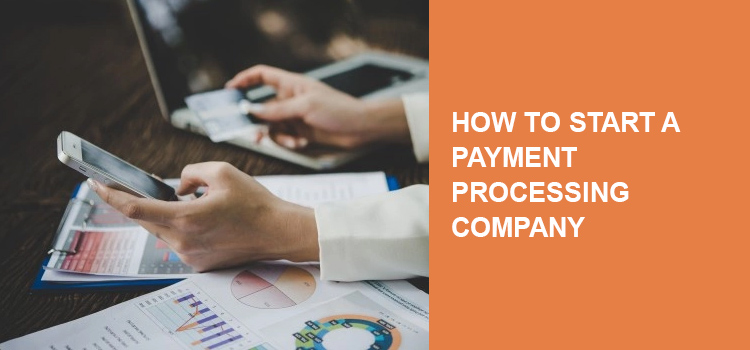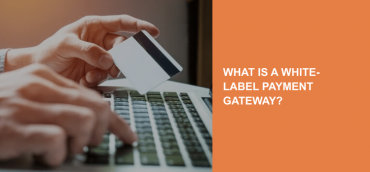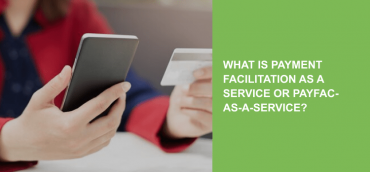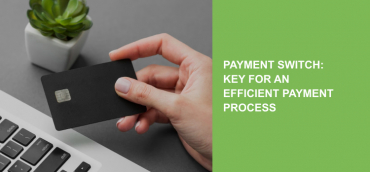Are you considering joining the payments market, but not sure what’s the best way to do it? We hope this article would serve as a great starting point for you, sorting things out about the payment processing industry and business models available.
Important definitions to know before becoming a payment processor
Before diving into how to become a payment processor, let’s define some basic terms.
Payment processing refers to the process of transferring money from a customer to a merchant in exchange for goods or services. As it is essential for businesses that receive payments online, there are payment processing companies that act as mediators. They facilitate transaction processing in order to make it more smooth and more secure for all parties. As digital payments play a pivotal role within the swiftly evolving e-commerce landscape, it secures the need for payment processing business in years to come.
Understanding Payment Processing Companies
The term payment processing company refers to a business or entity specializing in transaction processing services. They can act independently, offering only payment processing services or be a part of larger entities that provide payment software, technologies, and integrations.
Businesses that start a payment processing company act as intermediaries in the payment ecosystem, ensuring transactions are securely and efficiently processed. They play a vital role in facilitating various payment methods, such as credit or debit card transactions, digital wallet transfers, mobile payments, and electronic bank transfers.
The role of Payment Service Providers
A Payment Service Provider (PSP) is a type of payment processing company that specializes in providing a wide range of payment-related services and solutions to businesses.
Commonly, the term PSP describes a company that offers a wide range of services beyond basic payment processing, including payment gateway solutions, support for multiple currencies, fraud prevention, customer assistance, and recurring payment management. However, it’s also possible for payment processing companies to provide similar extended services. In general, the specifics can vary by company and their offerings.
How does a payment processor work?
To become a payment processor, you should understand how they work. Payment processors play a fundamental role in processing transactions. When a customer pays for goods or services at a merchant’s website, and the merchant successfully receives it, the payment processor orchestrates the technical infrastructure at work.
What happens behind the curtains when a client makes a payment is that the processor’s system takes over. It securely transmits sensitive details to the customer’s bank for authorization. Once approved, an authorization code is sent back to the payment processor, indicating transaction success. The processor then completes the transaction, and funds are settled from the customer’s bank to the merchant’s account. The processor ensures security, compliance with industry standards, and processing fee deduction throughout the process.
Why become a payment processor?
Payment processing is one of those rare industries that managed to gain an additional boost from the COVID-19 pandemic. While being already on the rise due to the gradual switch to a cashless economy in many countries, online payments got fueled by lockdown restrictions worldwide. The need to stay safe at home forced consumers to make purchases online instead of going to physical stores. In its turn, it resulted in the payment processing business getting increasingly prosperous, making it the right time to start a payment processing company.
In 2020-2021, while some industries struggled to make ends meet, the payment processing market hit the headlines with major deals. To name a few, Worldline’s $8.6 billion acquisition of Ingenico, which ended up creating the largest acquirer and payment processor in Europe. Or $5.3 billion Nexi’s acquisition of SIA, with the first one having an ambitious goal of becoming Europe’s biggest payment provider. And of course, we have to mention Stripe, a company that processed $817 billion worth of transactions across over 50 countries in 2022. Additionally, Stripe has diversified its offerings, now including charge card issuings and solutions to assist customers in facilitating cryptocurrency transactions, among other services. Another highlight of 2022 is Melio, an online business payments platform. Melio’s transaction volume exceeded $25 billion, marking a substantial increase, more than double the volume from the previous year.
Though becoming more and more competitive, the global digital payment market is still up-and-coming, attracting new players to join it. It is expected to reach $361.30 billion by 2030, expanding at a CAGR of 20.8% from 2023 to 2030, according to a new report by Grand View Research, Inc. If you’re looking to join this growing industry, proceed to the next part explaining how to create a payment processing company.
What are the options?
There are three ways of becoming a payment processor and starting your own business.
The first one is developing your own payment software or product. It’s a very courageous path, requiring lots of time, money, and resources. On average, building payment software from the ground up can range from $300K to $700K, and sometimes even more, depending on the scope of the minimum viable product (MVP). It’s important to note that this cost only covers development and does not encompass maintenance, which, on average, incurs additional expenses ranging from 20% to 50% of the initial development cost annually.
Another option is choosing a white label model, meaning you buy a ready-made payment software from a vendor and offer it to merchants under your brand and on your conditions. The white-label model usually operates on a monthly subscription basis, with rates comparable to a single full-stack developer’s salary. Also, a white-label model often includes a per-transaction charge for businesses as part of its pricing structure.
And there’s one more way to go for those who’d like to make money without development – the affiliate model. You’ll sign a contract with a PSP to bring them new clients for a reward you agreed upon. It’s an excellent choice for networking pros, but today we’ll focus on the first two that allow getting the sense of the business payment processing better.
Going the hard way: Building payment software from scratch
Now, let’s dive into how to become a credit card processor by developing your software from zero. As with any other business, before taking any further action to become payment processor, it’s essential to research the market and craft a business plan, figuring out what your functionality and services will be, how much you’ll charge, and how you’re going to attract clients. Once you’re ready, it’s time to act:
- Register your business and trademark according to your jurisdiction requirements.
- Partner with a bank and get an account for your activity. That’s where your business plan will come in handy!
- Acquire a domain name and the equipment needed. You can buy it, rent it, or lease it, depending on your funds.
- Hire a Development team who’ll build the software.
- Design your payment solution and develop it. It seems like a tiny little step in the list, but in fact, it will account for the largest share of your resources. Your success largely depends on its quality!
- You’ll need a decent server infrastructure and security appliance as you proceed with the development.
- As a payment business dealing with card transactions processing, you’re subject to PCI DSS certification.
- Partner and integrate with banks, payment providers, gateways, systems, processors, and other solutions to make your offering competitive.
All in all, you’ll need more than 2 years to start a digital payments business by completing all the steps and launching the MVP. Next, you’ll have to deal with maintenance, support, and upgrades, as well as passing regular security and financial audits. To promote your product and make it sustainable, you’ll also have to hire legal, marketing, sales, and support specialists.
Taking a shortcut: working with a white label solution
Luckily, there’s another answer to how to become a third-party payment processor. White label solution is more than twelve times faster way to start a payment business. That’s because you’ll have advanced payment software from the start, without having to spend money, time and resources on developing one.
In this scenario, the market research step becomes vitally important for you because you need to find a robust and trustworthy solution provider to work with. We’d be delighted to show you a free demo of our white label payment system. Seeing how it works and getting answers to all your questions from our specialists will help you make a well-informed decision.
What also remains on you are business registration and bank account opening steps. But instead of all other steps, all you have to do once you’ve settled on the white label payment solution vendor is integrating it and onboarding your merchants.
Keeping the software up-to-date and stable will be the responsibility of your solution provider, sparing your resources for business development and attracting new clients.
How much does it cost to become a payment processor?
Now that you know your options for how to start a digital payments business, let’s talk some numbers. It isn’t easy to estimate expenses for a self-developed payment solution. It depends on numerous factors, from the features you want your solution to have, to equipment prices, salaries, regulatory framework, etc. By rough estimates, it can be from $250k to $1M or more. This figure includes basic MVP creating steps, such as registration, domain, hosting, design and development, security appliances, licensing, and certifications.
In the white label model, the solution provider sets the price, and you’ll know it in advance by looking at the vendor’s website or asking them for a quote. For example, the pricing for Ikajo’s white label payment gateway starts from 5000$.
As for the affiliate model, it won’t cost you anything except for time and effort. You’ll just have to find a provider with a partner program and bring them clients to earn a certain percentage. Of course, unlike the first two options, it doesn’t make you the owner of a payment company.
Main risks and challenges of a PSP business
With an understanding of how to become a credit card processor, you also need to consider its main risks, as despite the industry’s attractiveness and profitability, payment companies also face certain challenges, such as:
- Keeping up with the pace of innovation in the industry. To remain competitive, it’s important to innovate and expand functionality, offering robust and versatile services.
- Maintaining security, as it is crucial when it comes to payments.
- Preventing fraud and minimising chargebacks.
- Complying with regulations. It’s especially burdensome for cross-border businesses.
The extent to which these challenges may affect you depends on the payment business model you’ll choose. Choose wisely, and don’t hesitate to contact us for assistance.
Frequently Asked Questions
What is the difference between a payment gateway and a payment processor?
A payment gateway is a technology that facilitates the secure transmission of payment data between a customer and the merchant, acting as the virtual point of sale. It handles the customer-facing part of a transaction, while the payment processor manages the complex back-end processes related to transaction authorization and settlement.
How do payment processors turn a profit?
Payment processors generate profits by charging merchants transaction fees. They may also charge merchants monthly, setup, and chargeback fees. Additionally, they can profit by offering value-added services, such as fraud prevention tools, data analytics, tokenization, and more.
How much initial capital is typically required to become a payment processor?
The initial investment required for starting a payment processing company varies greatly depending on whether you develop software or turn to a white-label payment solution. Generally, independent development can cost you from $300K to $700K or more, while opting for a white label solution can save you hundreds of thousands of dollars.




